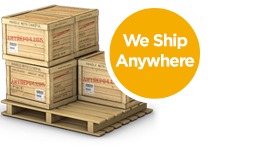Glossary
The following glossary provides essential definitions related to construction materials and processes, offering insights into terms such as abrasion resistance, absorption, and additives, which are crucial for anyone involved in the construction and design industry. Whether you're a professional or a curious enthusiast, this glossary aims to clarify the terminology you encounter in your projects.
| TERM | DEFINITION |
| Abrasion resistance | Ability of a surface to resist being worn away by rubbing and friction |
| Absorption | The relationship of the weight of the water absorbed be a ceramic specimen subjected to prescribed immersion procedure, to the weight of the dry specimen, expressed in percent. |
| Accelerator | A substance which, when added to concrete, mortar, or grout, increases the rate of hydration of the hydraulic cement, shortens the time of setting, or increases the rate of hardening of strength development |
| Acrylic | A general class of resinous polymers derived from esters, amides or other acrylic acid derivatives. |
| Additive | A term frequently (but improperly) used as a synonym for addition or admixture. |
| Adhesion | The state in which two surfaces are held together by interfacial forces which may consist of valence forces or interlocking action, or both. |
| Adhesion, mechanical | Adhesion between surfaces in which the adhesive holds the parts together by interlocking action. |
| Adhesion, specific | Adhesion between surfaces which are held together by valence forces of the same type as those which give rise to cohesion. |
| Admixture | A material other than water, aggregates, and hydraulic cement, used as an ingredient of concrete or mortar, and added to the concrete immediately before or during its mixing. |
| Aggregate | Granular material, such as sand, gravel, crushed stone, and iron blast-furnace slag, used with a cementing medium to form a hydraulic-cement, concrete or mortar. |
| Alkali | A chemical substance which effectively neutralizes acid material so as to form neutral salts. A base. The opposite of acid. Examples are ammonia and caustic soda. |
| Backing | Any material used as a base over which a finished material is to be installed. |
| Bisque cracks | Any fractures in the body of a tile visible both on the face and back. |
| Bond | The adherence of one material to another. Effective bonds must be achieved between the mortar and scratch coat, between the tile and mortar, and between the adhesive and backing. |
| Bonding agent | A substance applied to a suitable substrate to create a bond between it and a succeeding layer as between a subsurface and a terrazzo topping or a succeeding plaster application. |
| Bond strength | The force per unit area or length necessary to rupture a bond. |
| Bright gloss | Colorless or colored ceramic glaze have a high gloss. |
| Broken joint | Ceramic tile installation featuring each row offset for half its length. |
| Bullnose | A trim tile with a convex radius on one edge. This tile is used for finishing the top of a wainscot or for turning an outside corner. |
| Bullnose corner | A type of bull nose trim with a convex radius on two adjacent edges. |
| Butt joint | A plain square joint between two members |
| Buttonback tile | Tile that have projections on the bondable side. Many of these projections are round and therefore the term buttonback. |
| Butyl rubber | A copolymer of about 98% isobutylene and 2% isoprene. It has the poorest resistance to petroleum oils and ngasoline’s of any rubber. Excellent resistance to vegetable and mineral oils: to solvents such as acetone, alcohol, phenol and ethylene glycol; and to water and gas absorption. Heat resistance is above average. Sunlight resistance is excellent. It’s abrasion resistance is not as good as natural rubber. Usually low permeability to gases. |
| Catalyst | Substance which markedly speeds up the cure of an adhesive when added in minor quantity as compared to the amounts of primary reactants. |
| Caulking Compound | A soft, plastic material consisting of pigment and vehicle, used for sealing joints in buildings and other structures where normal structural movement may occur. Caulking compound retains its plasticity for an extended period after application. It is available in forms suitable for application by gun and knife and in extruded preformed shapes |

